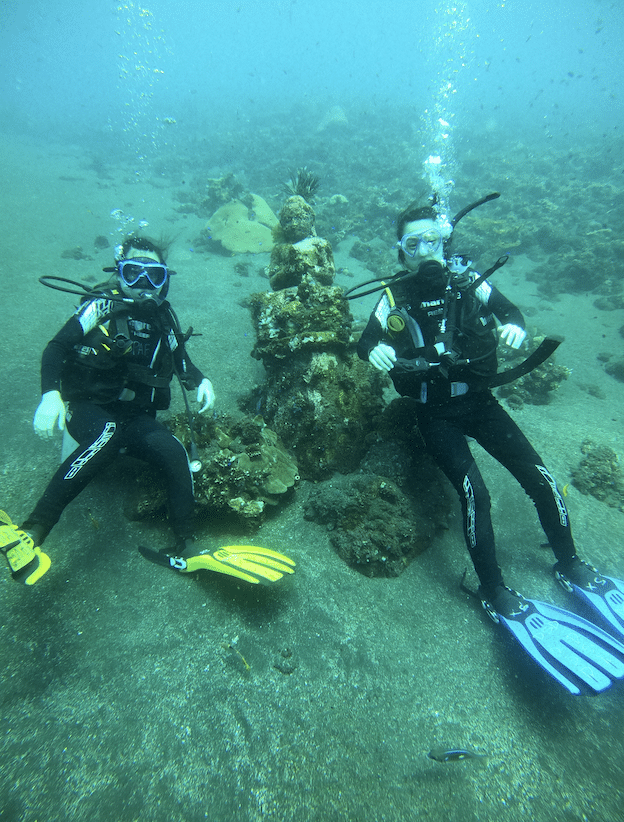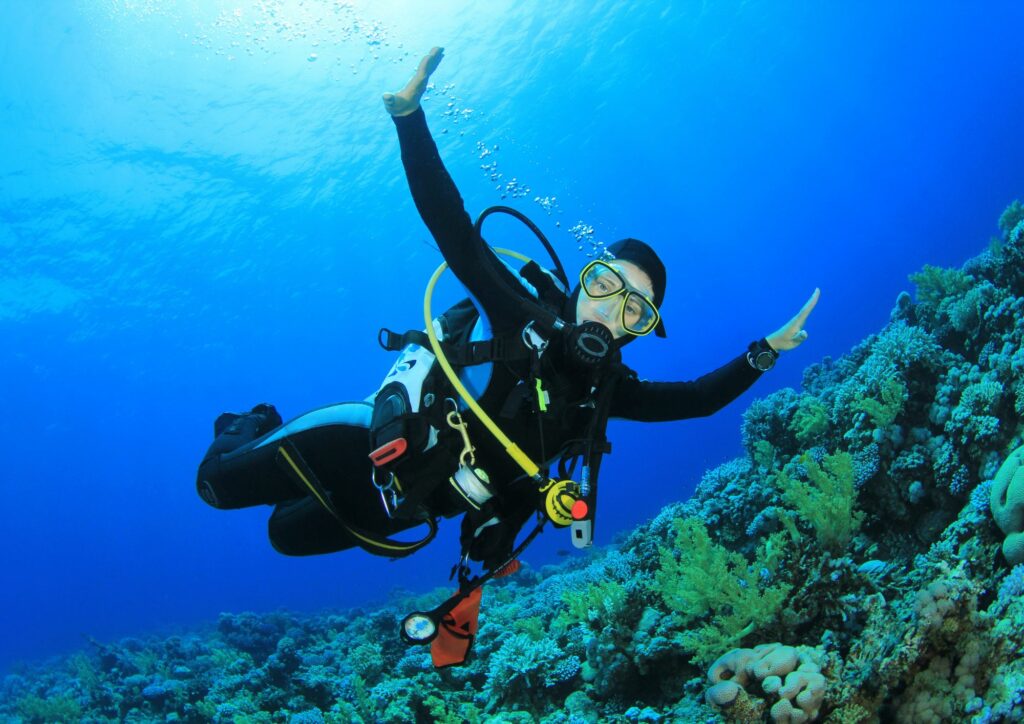Mastering buoyancy control is a fundamental skill every underwater diver must achieve to enhance their diving experience. Proper buoyancy control not only allows divers to conserve energy and reduce fatigue but also helps in protecting marine ecosystems by preventing unnecessary damage to delicate underwater habitats. By implementing effective diving techniques and understanding the nuances of weight management, divers can achieve a state of effortless gliding through the water. Staying calm is equally crucial, as it enables divers to focus on their surroundings while maintaining optimal buoyancy. Let’s dive into our essential tips and tricks for improving your buoyancy control underwater.
Understanding Buoyancy Control in Diving
Buoyancy control is a fundamental skill for anyone serious about underwater diving. It allows divers to maintain their desired depth and minimize exertion by regulating their position in the water column. Achieving optimal buoyancy involves understanding the principles of weight management, such as how to adjust your weight system based on your gear and body composition. Additionally, divers must learn to fine-tune their buoyancy using their breathing techniques; inhaling can lift you up while exhaling can help you descend. Staying calm and relaxed while underwater contributes significantly to effective buoyancy control, ensuring a more enjoyable and safe diving experience.
Key Techniques for Effective Weight Management
Effective weight management is crucial for mastering buoyancy control underwater. Divers should begin by determining their ideal weight for the dive, which can vary based on factors like exposure suits and personal buoyancy. One key technique is to use a weight belt or integrated weights that allow for easy adjustments. It’s essential to ensure that the distribution of weight is balanced, as this will help maintain stability and reduce unnecessary effort while swimming. Regularly practicing and adjusting weight based on the equipment and environment is vital for optimizing buoyancy control. Remember, keeping calm and relaxed during descent can also enhance your buoyancy experience, making your dives more enjoyable and safe.
Choosing the Right Equipment for Optimal Buoyancy
Choosing the right equipment is crucial for maintaining optimal buoyancy control while underwater. Start by selecting a buoyancy control device (BCD) that fits you properly; it should allow for flexibility and comfort. Pay attention to the type of tank you use, as lighter aluminum tanks can enhance your buoyancy management due to their lower weight compared to steel tanks.
Additionally, consider using a wetsuit or drysuit that provides suitable buoyancy characteristics for the conditions you plan to dive in. Lastly, ensure you carry the appropriate amount of weights; using the correct weight management technique will keep you buoyant without feeling heavy or unstable. This careful selection of gear not only contributes to better buoyancy control but also enhances your overall diving experience, allowing you to keep calm and focused during your dives.
The Role of Breathing in Buoyancy Control
Breathing plays a crucial role in mastering buoyancy control while underwater. As a diver, the air in your lungs is directly linked to your buoyancy; inhaling fills your lungs with air, making you more buoyant, while exhaling causes you to sink. To maintain optimal buoyancy, focus on steady and calm breathing techniques. Practice breathing deeply and slowly, allowing your body to remain relaxed and fluid in the water. This will help you manage your weight and adjust your ascent and descent more effectively. Additionally, keeping calm during your dive enhances your ability to control your buoyancy, as it reduces rapid movements that can disrupt your position underwater.
Keeping Calm Under Pressure: Mental Techniques for Divers
Diving can be an exhilarating experience, but it can also lead to anxiety, especially when you’re trying to manage buoyancy. Keeping calm under pressure is essential for maintaining control and ensuring a safe dive. One effective technique is to practice deep breathing; inhaling slowly can help regulate your body’s buoyancy and promote relaxation. Visualizing peaceful underwater scenes can also aid in reducing stress, allowing you to focus on the moment rather than the challenges. Additionally, familiarizing yourself with your equipment before diving helps build confidence. Remember, a calm diver is better able to manage weight adjustments and make necessary corrections during the dive.
Practical Drills to Enhance Your Buoyancy Skills

To enhance your buoyancy skills, integrating practical drills into your underwater diving routine is essential. Start with the “hovering drill,” where you practice maintaining a stationary position at a specific depth. This exercise helps you develop a keen sense of your buoyancy and how your body reacts at different levels. Another effective technique is the “weight check drill”; adjust your weight system based on your exposure suit and tank variations, ensuring optimal weight management.
Lastly, practice the “finning and breathing drill”—swimming while varying your air consumption and fin strokes to observe how your buoyancy changes. Engaging in these drills not only builds your confidence but also cultivates a deeper familiarity with your diving equipment and body dynamics, significantly improving your buoyancy control over time.
Common Mistakes to Avoid in Buoyancy Control
One of the most critical aspects of buoyancy control is avoiding common mistakes that can hinder your underwater experience. One frequent error is over-inflating your BCD (buoyancy control device), which can lead to uncontrolled ascents. Instead, be cautious with your buoyancy adjustments and focus on subtle changes. Additionally, neglecting proper weight management can throw off your balance, making it crucial to regularly assess your weights according to your gear and diving conditions. Finally, panicking can cause you to lose control of your buoyancy. Remember to keep calm and practice relaxation techniques to maintain a steady buoyancy while diving.
Achieving Mastery in Buoyancy Control in Bali Diving
Achieving mastery in buoyancy control is a key skill for any diver, and Bali’s diverse underwater environment offers the perfect setting to hone this essential ability. Proper buoyancy control allows divers to glide effortlessly through the water, conserve energy, and protect the fragile marine ecosystem. For Bali diving, especially in sites like Tulamben or Nusa Penida, where underwater conditions can vary, mastering buoyancy is critical for navigating different terrains, such as coral reefs and wreck sites, without disturbing the environment or wildlife.
Buoyancy control is largely managed through breathing techniques and proper use of the buoyancy control device (BCD). In Bali, with the rich coral gardens and manta rays or mola mola encounters, the ability to hover effortlessly can enhance both safety and the overall dive experience. By fine-tuning these skills, divers can enjoy the breathtaking beauty of Bali’s underwater world with greater ease, improving their confidence and capabilities on each dive.

I completely agree with the post. Mastering buoyancy control is indeed a fundamental skill for every underwater diver. The tips and tricks provided are very helpful, especially for those who are new to diving.
Hi Razak, thank you for sharing your thoughts on buoyancy control! We’re glad to hear that the tips and tricks provided were helpful for you. At Gill Divers, we understand the importance of mastering buoyancy control in diving. It’s essential to conserve energy, protect the marine ecosystem, and enhance the overall dive experience. If you have any further questions or would like to learn more about our diving techniques, please feel free to contact us at Tel: +65 6734 9373 or Email: [email protected]. We’re always here to help.
I’ve been a fan of this blog for some time now. The post highlights the importance of buoyancy control in diving and provides valuable insights on how to achieve it.
Hi Kuan Kian, thank you for being a loyal reader of our blog! We’re thrilled to hear that you found the post on buoyancy control informative and helpful. At Gill Divers, we believe that mastering buoyancy is crucial for any diver, whether you’re a seasoned pro or just starting out. Our goal is not only to provide tips and tricks but also to encourage divers to adopt attitudes of better respect and appreciation of the ocean and its life. If you have any questions or would like to learn more about our diving courses in Bali, please don’t hesitate to reach out to us at Tel: +65 6734 9373 or Email: [email protected]. We’re always here to help. Keep calm, keep diving, and stay buoyant!
I must say, this post is a great resource for anyone looking to improve their buoyancy control. The examples provided are relatable and easy to understand.
Thank you so much, Noraini! We’re thrilled to hear that our post on buoyancy control has been helpful for you. At Gill Divers, we believe that mastering buoyancy is a crucial skill for any diver, and we’re committed to providing the best resources and guidance to help you achieve your diving goals. If you have any further questions or concerns, please don’t hesitate to reach out to us at Tel: +65 6734 9373 or Email: [email protected]. We’d be happy to help you with any aspect of buoyancy control. Best regards!